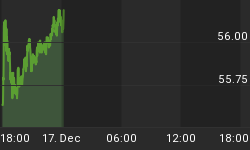No one expects a CEO to earn anywhere close to what a lower-level employee earns, but when a CEO earns a regular employee’s salary in a single day, it raises eyebrows—which is exactly what’s it’s doing in the UK right now, where legal measures are being considered to close this massive gap.
And the gap is only getting bigger as CEOs opt to pay themselves with increasing generosity.
The UK has recognized this problem and is taking legal measures to make salaries more transparent. Under draft legislation presented by lawmakers, Britain's largest companies will have to explain the gap between salaries paid to their CEO and those paid to their other employees.
These reforms will include UK companies with stock market listings and more than 250 employees. If this legislation is approved, companies won’t just have to publish their salary ratios beginning in 2020, they’ll also have to justify them.
Responses, as expected, have been mixed.
While equal pay campaigners and business and investors groups have welcomed the draft legislation, companies who have had their hands caught in the cookie jar by paying excessive salaries are necessarily irked. The public, of course, is outraged at the excess.
But it’s not just about excessive pay: It’s about excessive pay that isn’t necessarily based on company performance. In other words, is it even worth it? Are investors getting their money’s worth?
“Most of the UK's largest companies get their business practices right but we understand the anger of workers and shareholders when boss' pay is out of step with company performance,” Business Secretary Greg Clark said in a statement. Related: Goldman: Netflix Is Set To Soar
“High pay is only ever justified by outstanding performance," Matthew Fell, chief policy director of the CBI, a business lobby group, told CNNMoney. "The legislation can help to develop a better dialogue between boards and employees about the goals and aspirations of their business," he said.
According to report by the High Pay Centre in August 2017, chief executives of companies in the FTSE 100 index make 129 times the pay of their employees on average.
AstraZeneca witnessed one of the biggest shareholder revolts over executive pay last month. More than 37% of shareholders voted against it or abstained after the pharmaceutical company revealed a 46-percent drop in operating profits for the first quarter.
A similar drama recently unfolded with Royal Dutch Shell when more than one-quarter of investors voted against almost 9 million euro pay package for 2017 for CEO Ben van Beurden. Of course, Shell managed to get his $10 million pay for last year through, but shareholders’ still resistance made it a challenge.
The UK is not the only country considering the introduction of a requirement to make CEO-employee salary ratios public.
Due to a provision of the Dodd-Frank financial reforms passed during the Obama administration, this is the first year that U.S. businesses are required to disclose this ratio. The AFL-CIO's annual Executive PayWatch database shows that in many cases, the pay for top executives is hundreds or even thousands of times bigger than the median worker.
"This year's report provides further proof of America's income inequality crisis," AFL-CIO Secretary-Treasurer Liz Shuler said in a statement. "Too many working people are struggling to get by, to afford the basics, to save for college, to retire with dignity while CEOs are paying themselves more and more."
An employee in Walmart has a median salary of $19,177, according to the Financial Post, while their chief executive earned over $22 million last year. Even more glaring, an employee of Live Nation Entertainment, the concert and ticketing company, would have to work for nearly 3,000 years to earn the $70.6-million salary its CEO made last year.
“It’s grotesque how unequal this has become,” said Louis Hyman, a business historian at Cornell University. “For CEOs, it’s like they are winning the lottery year after year. For a lot of Americans, they don’t have any savings. When they lose their job, they lose everything.”
According to the Canadian Centre for Policy Alternatives report, which examined the 100 highest-paid CEOs at TSX-listed companies for 2016, the average CEO salary together with bonuses and benefits was worth over $10 million.
This is compared to the average working Canadian salary of under $50,000--over 200 times lower. Still, projections are that CEO pay hikes will be around 8 percent, while worker salaries are set for a meager 0.5-percent increase.
This isn’t the Soviet Union, circa 1940. And it’s not about income equality, either, for those who are lobbying for greater transparency. It’s about performance and narrowing the gap—not closing it.
By Damir Kaletovic for Safehaven.com
More Top Reads From Oilprice.com:
















